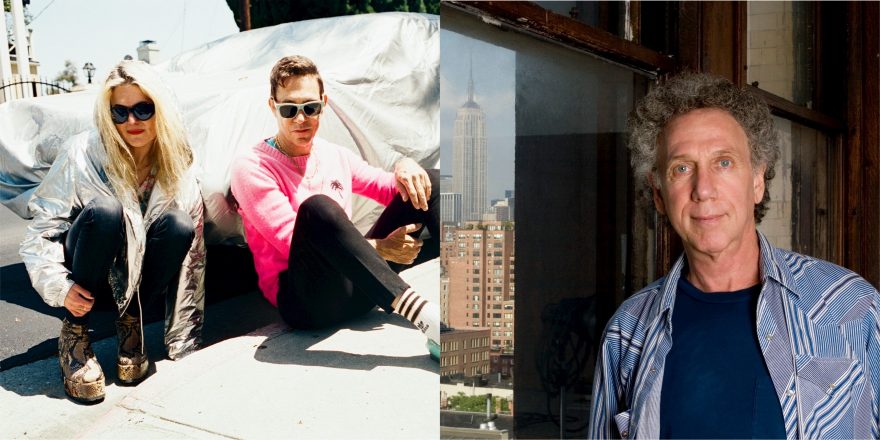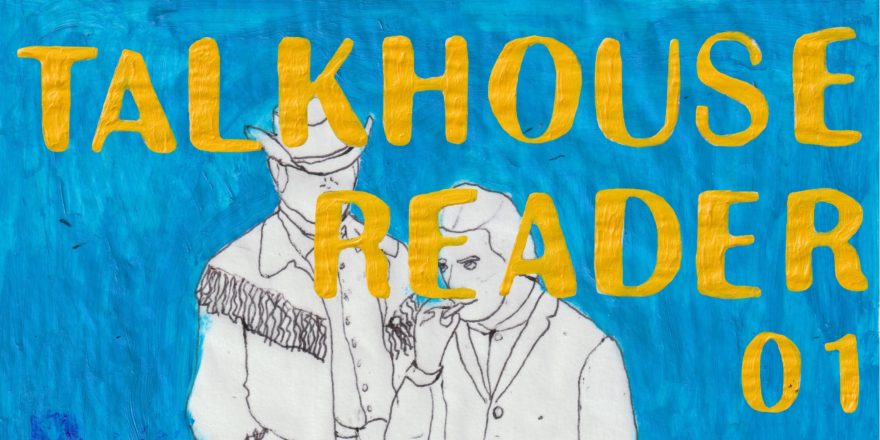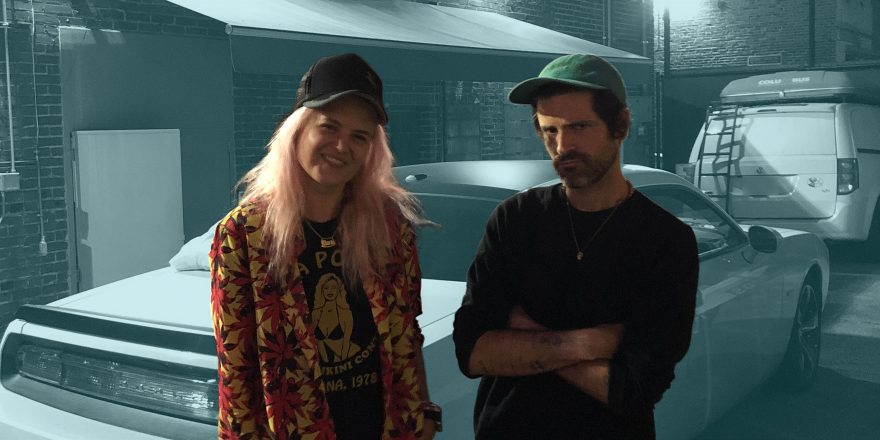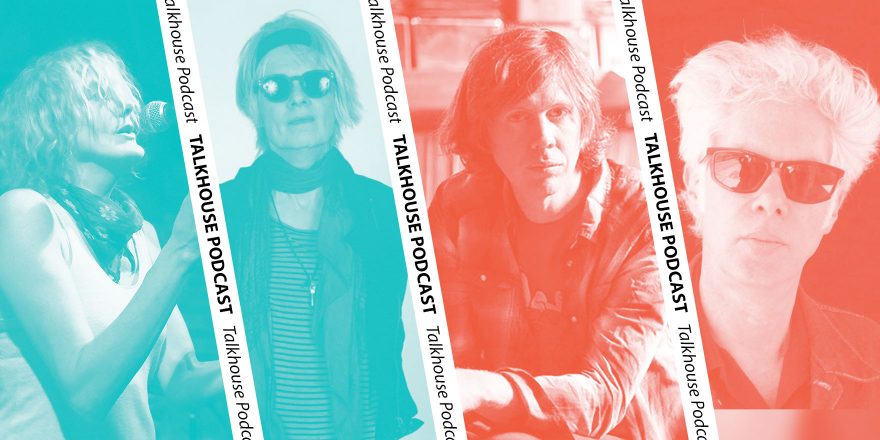Bob Gruen is a legendary rock photographer — you’ve undoubtedly seen his iconic portraits, whether they’re featuring Sid Vicious snarling with a mouthful of hot dog, or Debbie Harry crawling out of a wrecked car, or John Lennon with his arms crossed over a t-shirt bearing the block-letter words, “NEW YORK CITY.” The Kills are a rock duo formed in 2001 by Florida-born singer Alison Mosshart and English guitarist Jamie Hince. The first track of the band’s new record, God Games (out October 27 on Domino), is named for the city that’s helped shape them over the past two decades, so to celebrate, they got on Zoom to chat about their love for the place with their New York-native friend, Bob.
You can read more from some our favorite artists on the subject of NYC in the Talkhouse Reader.
— Annie Fell, Editor-in-chief, Talkhouse Music
Bob Gruen: So, let’s talk about New York. My favorite topic.
Jamie Hince: It’s one of our favorite topics as well. And it’s funny, it keeps coming up — I mean we’re not a New York band — obviously, you can tell by my accent. But there’s such an association that we have with New York that people often see us in that way. I have to say, I’m very happy about that. I’m proud of it. I can’t explain it.
Alison Mosshart: Well, we’ve spent a lot of time there.
Bob: It’s really hard to explain what it means. I remember in the ‘70s, when I first got the New York City t-shirt — the one I later gave to John [Lennon] — it was $5 in Times Square and I bought it because I just liked the graphics and the way it said “New York City.” And I would wear that around and it would attract attention. There seems to be a power in the three words, “New York City.” When you say, “New York City,” people kind of stand back, their shoulders go up. There’s like an aggressiveness about that.
Jamie: I remember that t-shirt that John Lennon had. When I saw that photograph when I was a kid, I felt exactly the same way. It just sounded so cool.
Bob: Yeah. There was a merchandise company that wanted to airbrush and put “Boston” or “Los Angeles” or “London” instead, and try to sell it to the cities. I talked to a friend of mine and we both thought it was a very bad idea. I said at one point, “Well, don’t you think if people are far away, like in India or something, and it says ‘New Delhi’ — don’t you think that would be better than ‘New York’?” And he said, “The further away from New York, the more the people want to be there.”
Alison: Yeah.
Bob: I went to Japan in 1979 and ‘80, and wearing the New York City t-shirt, people would take me out to dinner just because I was from New York. They wanted to know about New York. It’s hard to explain living here, because it’s just a place that a lot of people live. It’s very difficult. There’s a lot of trouble you put up with every day, crazy people on the subway, traffic going every different way. People don’t really follow rules — when a New Yorker goes to Los Angeles, the first thing that happens is he gets arrested for jaywalking. He can’t believe he can’t just run across the street, you know? It’s a very freewheeling kind of place. It’s like from that movie, “We don’t need no badges.”
Jamie: I think also, because it’s so built up and it’s so concentrated — I’m talking about Manhattan, because when I first went to New York, Brooklyn was not New York — I remember it was even freaky walking down to Avenue A or Avenue B. People said, “Don’t go past B.”
Bob: A was “Adventurous,” B was “Brave,” C was “Caution,” and D was “Death.”
Jamie: It was that kind of thing. It was much like when I first moved to London, and you were never more than five minutes away from utter danger. The way that London is set up, you don’t push the danger to the boundaries, you’re living on top of it everywhere. And I really felt like that in New York. Which, I have a long history of mistaking danger and insanity for excitement.
Bob: Yeah, there’s something about living on the edge and being in danger that keeps you alert.
Alison: Yeah. Well, I love a 24 hour city. I’ve always loved New York because I’m a night person, and there was always something going on in the middle of the night. There was no cut off point. There was always lights, there were always people, there were always cars.
Bob: And you could always get work done. Now everybody works on a computer, but in the old days, if you wanted to print something, you had to go to what was called a “type house,” and they would actually give you a piece of paper with all the words written perfectly that you could then literally cut and paste onto your layout and send to the printer. Those places were open 24 hours, because if you were making something at 2 in the morning you had to run out and get the type made.
Alison: That was it. When I was on tour, I would wait to get to New York because I knew that if I wanted to finish working on my fanzine or I wanted to print it, I could do it at 3 in the morning.
Jamie: We did that a lot on tour, actually. Here’s a blast from the past: Kinko’s!
Alison: I love it.
Bob: They saved me in the ‘80s when the only way to communicate with a magazine in Spain or Japan was through a fax. I would ride my bike over to Kinko’s at 3 in the morning and send out the faxes, and then because of the time change, I would wake up at 11, go to my local coffee shop, and get the answers.
Jamie: It’s obvious, but I never thought of it before until you said it: the way people live in the city dictated [the hours]. That’s why they had these print shops open 24 hours — supply and demand, and the demand was, “We want to create all night!”
Alison: Yeah. I don’t know why there’s not more cities like that. Especially in a place like LA, where there’s way too many people, there’s way too much traffic — if those things were available, you’d immediately have that thing like you have in New York, where you’ve got your night people and your day people.
Bob: There are so many people in such a small space, and so there’s a lot more creative people in one place that could support that kind of creative 24 hour community. That’s why the Lower East Side music scene developed, because everybody lived there within a few blocks. If you lived eight blocks away, you’re almost out of the neighborhood. Everybody was in two or three blocks of CBGB’s, and you could walk there and you could stagger home drunk. You didn’t have to drive and crash somewhere.
Jamie: It’s almost safe to say that there was so much art there because regular people didn’t really want to live in a lot of those places.
Bob: [Laughs.] That’s true.
Jamie: Certainly no one wanted to live in the Meatpacking District. Now no one can afford to live there. But what a wonderful cocktail of cheap, undesirable living, in a place that’s open for creatives 24 hours! It’s just bound to bring something fantastic. And danger, obviously, but something fantastic. And drugs. [Laughs.]
Bob: They’re everywhere. It’s just we’re more concentrated, so you see it more often.
Jamie: Yeah. That’s never gone away, it’s just the drugs have changed. Are you from New York originally?
Bob: Yes, I was born on 8th Avenue and 50th Street.
Jamie: Really?
Bob: I actually grew up on Long Island, but I came back to the city when I was 18. I got an apartment in the Village and I’ve been here ever since — which is now almost 60 years ago.
Alison: Wow.
Jamie: That is unreal.
Bob: Yeah. Actually, I live in a unique building here in New York. In 1968, this building was the Bell Telephone Laboratories, where most of the electronics in your phone were invented. They invented vacuum tubes here, they invented television, the transistor, Bluetooth transmission — all of that came from this building. And then they were doing so much for the government, they moved out to New Jersey. A foundation took it over and got federal government financing to build artist housing. Rather than regular apartments, they built lofts for people, and there’s almost 400 lofts in this building. I was one of the early tenants; I moved in in 1970, when it opened.
Alison: Where is it?
Bob: It’s in the West Village. You mentioned the Meatpacking District — when I moved in, the Meatpacking District was packing meat. [Laughs.] Now they sell expensive clothes up there. But yeah, this was like west of nowhere. Nobody even knew where Washington Street was. But eventually it has become, I think, the wealthiest zip code in New York City. As they moved all the the factories out, they put in condos and rich people.
Jamie: It’s so sad to hear that. I can’t imagine a time when the government of a metropolis like that is trying to encourage artists to come and live there.
Bob: [Laughs.] It’s the only time it ever happened. Well, it wasn’t the metropolis, it was actually federal financing from Washington, which was amazing. It’s the only federally financed artist housing in the world. They don’t even do this in France! But we got the building, and anybody who moved in — people do not move out of here, they get carried out. There’s still a lot of originals like me — I was 24 when I moved in — but there have been two or three apartments a year that open up.
Alison: For 400 spaces? That’s wild.
Bob: Yeah. So there’s a lot of crazy people in this building.
Alison: I bet.
Bob: You should come to a tenants meeting! 400 people who each have a unique vision of the world…
Alison: [Laughs.]
Bob: But it really helped me in New York because it’s a very affordable rent. I had lower rent than the Lower East Side, even.
Jamie: It seems like New York is one of the few places in the world where that happens. I mean, the Chelsea Hotel — that was another one where they encouraged that kind of thing, with long term residencies for artists. I can’t think of another city in the world where that’s going on.
Bob: Well, nowadays there’s a lot of old buildings in Detroit that you can get cheap, or in St. Louis. Places like that, that are rebuilding neighborhoods that got deserted.
Jamie: I understand that when it’s to do with generating money, but New York — I mean, it’s one of the greatest cities in the world, if not the greatest city in the world. It’s just mad to me that something like that has been going on for so long, encouraging artists.
Bob: I think there’s something about the location of New York, the fact that it’s a great harbor, it’s between everything. Even though Washington is the capital, New York is the center. And in a big way, it’s the center of media — every newspaper or magazine in the world has a home office in New York City, and every band that plays on tour goes through New York City. Or, very often, finishes in New York City. That’s one of the reasons Madison Square Garden has this power, because it’s just a big room like every place else, but when people finish their tour, they’re really at the height.
Jamie: I remember pleading about that, because we’d always start in New York City—
Bob: No, no, no! That’s the worst thing you could do.
Jamie: For years, we started in New York City, and then by the time we got to LA, we’d be on fire.
Bob: If you start in New York, the whole world’s watching your rehearsal. You want to finish in New York when you’re really good, because all the world’s press is here. I remember we didn’t really like the New York Post for their politics, but every time we’d get a picture published in the Post, my agent was really happy because everybody in New York would see it, which meant every magazine in the world would call up within an hour asking for it.
You know, there’s a thing about New York — it’s actually built on a rock. A lot of cities are built on dirt or sand. In New York, we have these big skyscrapers because they can literally blast a hole in the rock and then put the beams down and concrete them right into the rock. They can build it as high as they want, it’s not going anywhere.There is a fault that goes across 14th Street and up Broadway, but basically [Manhattan] is two giant solid rocks. And you can feel it when you come over the bridge from Long Island or in from New Jersey. You hit Manhattan and you just have this basic solidness. You’re connected to the earth. You can feel it — or maybe I just feel that way.
Jamie: I just remember the impact when I first came to New York… The first time I came with you, Alison, do you remember? We were just filming everything. I was actually too afraid to go into the Chelsea Hotel, but I filmed it from outside the whole building. I went into the lobby, but I didn’t want to wander around.
Bob: It’s a little spooky! It was very gothic staircase.
Jamie: And I’d read a lot of stuff. I was obsessed with Edie Sedgwick, and I’d read that Jean Stein book and noted down all the rooms that different people lived in. I knew she’d lived in 105, so every time we went there, I would book room 105 to stay in. But the first time we were there, we were just taking photographs and filming it because we thought we would never come back.
Alison: But also, you walk into it and it’s like walking into someone’s house. It didn’t feel like a hotel. But we started staying there, and we never stopped staying there. We stayed there all the way until it closed.
Jamie: The longest we were there, we did three months in one go. That really cold winter in — I don’t know when it was, but it was the coldest I’ve ever been. It was, like, -15.
Bob: [Laughs.] They don’t have much heat there.
Jamie: No, they had one of those tiny little blowers. You had to sit on it.
Bob: Did you have a TV with a coat hanger antenna?
Jamie: For two years, I asked for a remote control — eventually I think they must have changed the system, because suddenly they brought me a fresh remote control, but it hadn’t worked for some years.
Alison: But you always had to ask for batteries, you always had to ask for light bulbs. There were no light bulbs in the lamps.
Bob: People probably stole them!
Jamie: Yeah, I think they did. They remembered to steal the light bulbs, but they forgot that they left their crack pipe in the drawer next to the bed. [Laughs.]
Bob: [Laughs.] There were a lot of drugs in the Chelsea.
Jamie: Yeah. I mean, it’s all changed so much, hasn’t it? In most places in the world, we’re seeing the devastating effects of capitalism at its worst…
Bob: Yeah, back in the ‘70s, you didn’t join a band to make money, you joined a band to meet girls and get free drinks. Because there wasn’t really any chance for success — that was kind of wrapped up with people who’d sing commercial songs that were written for them, like The Monkees. So playing CBGB’s wasn’t a commercial endeavor. In fact, one of the most common phrases about bands back then was, “no commercial potential.” But we were all having fun. Then it started getting so much more commercial that by the ‘80s, I remember Malcolm McLaren telling me that he had met a band, and the band had a whole plan of recording the record, making a video, getting on TV, and breaking up. They’d already expected to break up within about a year-and-a-half. [Laughs.] It was just kind of a business plan: “We’re going to make this product, sell it.”
Jamie: I mean, obviously you’ve noticed how crazy it’s changed, but you’re still in love with it. Do you feel that you’re in love with it in a nostalgic way?
Bob: Nah, I still like it for the common sense. I can’t afford a lot of stuff around here. The prices of everything are going up — a taxi that used to cost $5 costs $35. But the common sense is still here. If something goes down, everybody on the platform is aware of it and moves to get away. People don’t throw up their hands and go, “Oh my!” That kind of common sense, I think for me anyway, is still here in New York.
Jamie: You have to really hone your skills in a place that’s that busy with that many people there. It’s communication — you have to get along with people.
Bob: You have to be on your feet, you have to come up with a quick answer. And there’s a lot of competition. Something I realized early on is that if you’re one-in-a-million, really special — there’s eight million people in New York, [so] there’s eight other people just like you, you know? No matter who you are, you got competition.
Alison: That’s healthy.
Bob: It is healthy, because you have to work harder and you have to produce a better product. Because we go around the world and we see some things people put up in other cities — an art show or something like that — and you go, “Really? This is what you came up with?”
Alison: I know. [Laughs.] Because there’s no competition!
Bob: Yeah, exactly. It’s just entertainment. Whereas in New York, you gotta be saying something. I remember Bobby Neuwirth used that phrase; it’s kind of from the hipsters of the ‘50s. They would see some jazz guy, and if you said, “I saw so-and-so playing this weekend,” they said, “Was he saying something?” Like, did it matter? Did you take some message home? I always loved that expression because it goes for any kind of art. To make it in New York, you gotta be saying something. Other places, they could get a little entertainment. But in New York, we get entertainment on the sidewalk every day. It goes back to my favorite comment [I heard] after the Cockettes played a show down on the Lower East Side. Nobody was impressed, and I remember somebody in the lobby said, “You gotta be more than weird to get attention in New York.”
Alison: It’s the capital of weird.
Bob: We got weird cops, you know?
Alison: [Laughs.] Oh, I miss New York every day that I’m not there. The feeling that I have when I’m there as an artist working is that I can accomplish anything, I can get anything done. The things that I need are there, the people that I need…
Bob: Any material you want is available nearby.
Jamie: I have that footage of when we were staying at the Chelsea — I’ve got a Super 8, and I walk into my room and you can’t see any carpet or surface because it’s just paper and photographs and typewriters.
Alison: Cameras everywhere.
Jamie: I wonder why that is. I mean, we used to save up our days to go absolutely bananas on creating stuff when we got to New York. And there’s no reason why you can’t do that anywhere else, but we just always did it there.
Alison: I think the reason is, you get so much information in New York. It’s like an endless stream of inspiration, and different opinions, and different things that are happening to your brain. Every time I come back from New York, I do something like write a song, write a book. I am full, I am maxed with juice, I’m ready to go. And that’s what New York is to me. If you are in tune to that kind of thing, and you want to see life really happening, it’s happening — triple-billion-times-fold.
(Photo Credit: left, Myles Hendrik; right, Hanna Toresson)







